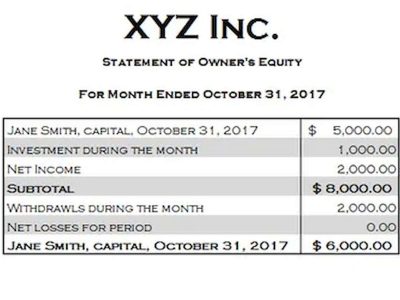
Looking at the average d/e ratio of S&P 500 companies is also important. But, a d/e ratio over 2 might seem bad, yet it depends on the industry. One big mistake is not looking at industry standards when we see a high d/e ratio. For example, a high d/e ratio might not be bad if other companies in the same field have similar numbers. In Q2 of 2022, the US’s d/e ratio was 83.3%, showing a lot of debt across different industries.
- Long-term assets are the value of the capital assets and property such as patents, buildings, equipment and notes receivable.
- Clearly outline any significant influence you have over an investee to provide investor insights into potential impacts on financial performance.
- Total Equity represents the value that would remain for shareholders if the company were to sell all its assets and pay off all its liabilities.
- Preferred Stock, if present, indicates shares that often carry a fixed dividend rate and have priority over common stock in dividend payments and asset distribution upon liquidation.
- This is because the company has less debt burden and more ownership stake held by shareholders.
- To ensure accuracy in your calculations, it is important to use official financial statements, such as those found in a company’s annual reports or quarterly filings.
Other Financial Obligations
- A higher ROE indicates efficient utilization of shareholder capital.
- As an Investopedia fact checker since 2020, he has validated over 1,100 articles on a wide range of financial and investment topics.
- The practical application of this formula, through systematic data gathering and adherence to accounting standards, allows for reliable calculations that reflect a company’s true worth.
- Equity represents the net value of a company, or the amount of money left over for shareholders if all assets were liquidated and all debts repaid.
- The Market Capitalization of publicly traded common stock can be construed as the company’s worth based on its market standing or its demand among investors.
- The distinction in the usage of the term pertains more to the corporate structure of the business (and the applicable taxation policies).
In these cases, other financial metrics like cash flow or profitability might provide more useful insights. If the company ever had to be liquidated, it’s what the shareholders would get. The proportion of reserves relating (attributable) to equity holders is part of total equity, while reserves attributable to other stakeholders are not.
- By examining assets, liabilities, and shareholder contributions, one can gain insight into the company’s capacity to generate profits and fulfill financial commitments.
- For corporations, total equity is also referred to as shareholders’ equity, whereas for sole proprietors or partnerships, it might be labeled as owners’ equity.
- If the company ever needs to be liquidated, SE is the amount of money that would be returned to these owners after all other debts are satisfied.
- The number of shares issued and outstanding is a more relevant measure than shareholder equity for certain purposes, such as dividends and earnings per share (EPS).
- Unlike preferred stock, common stock doesn’t guarantee dividends or asset distributions.
Debt to Equity Ratio – What is it?
If your business has strong fundamentals and isn’t financing all of its growth with debt, your owner’s equity should be increasing with time. Understanding equity and being able to track its growth is crucial to understanding the long-term financial health of a business. One option is to focus on improving profitability and generating positive cash flows. This can be achieved through cost-cutting measures, increasing sales, or implementing more efficient business practices.

How Shareholder Equity Works
Common Stock represents the par or stated value of the shares issued to regular shareholders, signifying their basic ownership in the company. Preferred Stock, if present, indicates shares that often carry a fixed dividend rate and have priority over common stock in dividend payments and asset distribution upon liquidation. The total equity section on a balance sheet is typically comprised of several distinct accounts, each providing insight into the sources of a company’s ownership capital. Yes, if a company’s liabilities exceed its assets, it could have negative total capital, which signals financial distress. This is often the case for Suspense Account businesses in bankruptcy or severe financial trouble. Total capital refers to the sum of a company’s financial resources, including equity, debt, and other funding sources, used to support its operations and investments.

Identifying Total Assets

Total equity shows the portion of the company’s assets that are owned outright by shareholders, which is crucial for evaluating ownership claims http://upbuy.netdivs.us/2023/12/25/what-is-the-normal-balance-for-an-account-2/ and control. It helps in determining the book value of a company, aiding in mergers, acquisitions, or sale negotiations. Total Equity represents the value that would remain for shareholders if the company were to sell all its assets and pay off all its liabilities.
Includes non-AP obligations that are due within one year’s time or within one operating cycle for the company (whichever is longest). Notes payable may also have a long-term version, which includes notes with a maturity of more than one year. Property, Plant, and Equipment (also known as PP&E) capture the company’s tangible fixed assets.
How to Identify Quality Companies: A Fundamental Investor’s Guide
Calculating personal net worth involves subtracting total liabilities from total assets. This calculation provides a financial snapshot, allowing individuals to track progress. Total Equity does not account for intangible factors like future total equity formula growth potential or market conditions.
